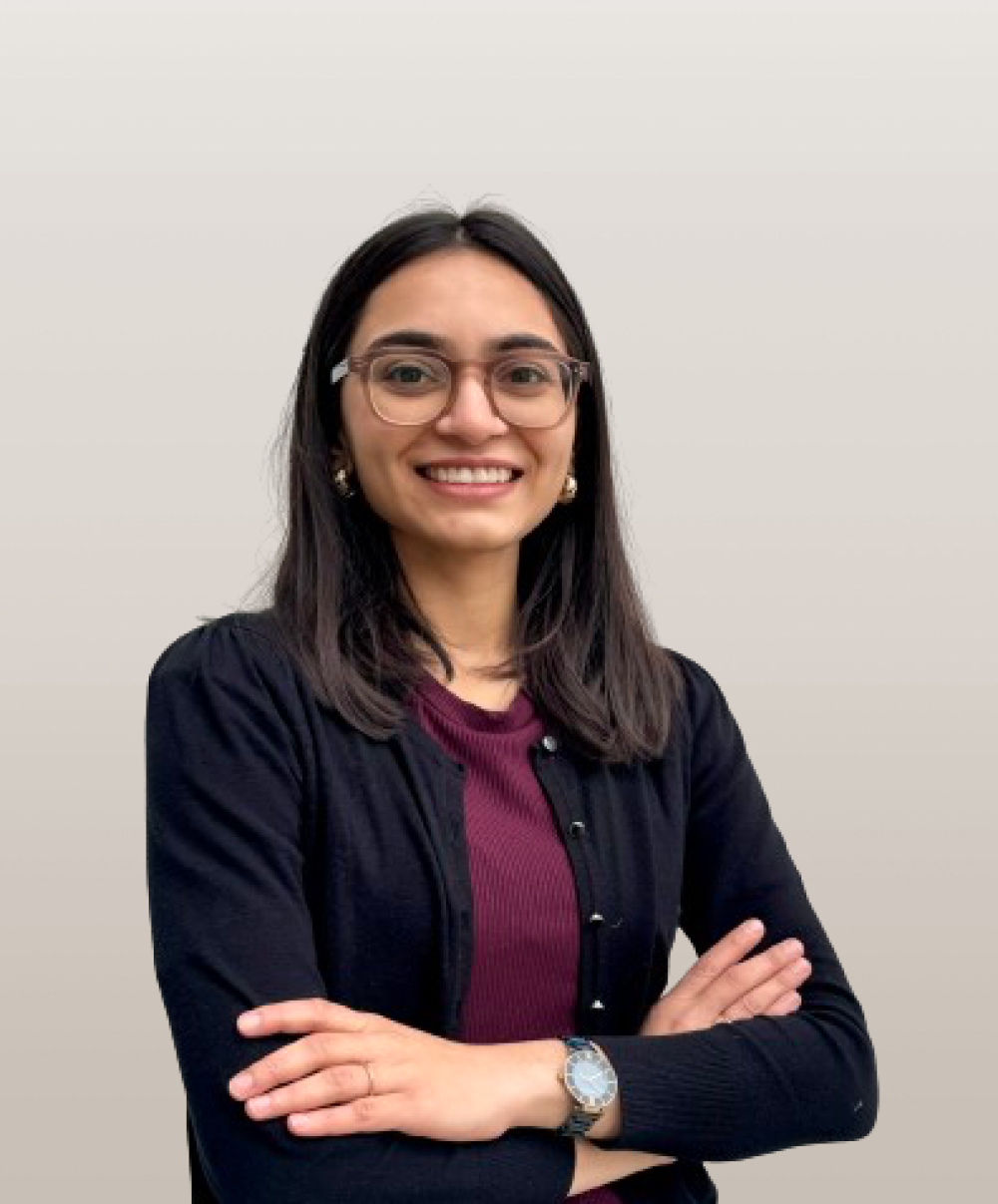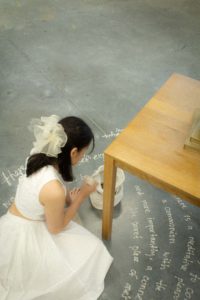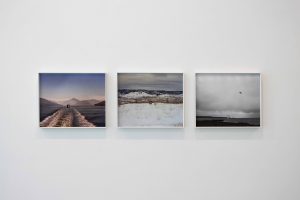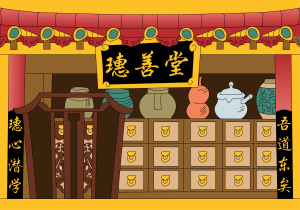Seamless Group Trip Planning : Connecting Personal Inspirations to Unified Decisions
Dhanvi Patel
See it On Campus: Level 1
Visitor InfoOverview
I embarked on researching about trip planning, recognising the intricacies of group decision-making and the potential for design innovation. During this journey I mapped out three primary areas of concern : lack of relevant recommendation, navigating decision making as a group and lack of collaborative features. For each, I conceptualised user-centric potential features aimed at addressing these issues.

Research Outcomes
User centric AI Features
High Fidelity Application Mockup
My Role
UX Researcher
Product Designer
Supervisor
Haig Armen
The Rollercoaster of Group Trip Planning
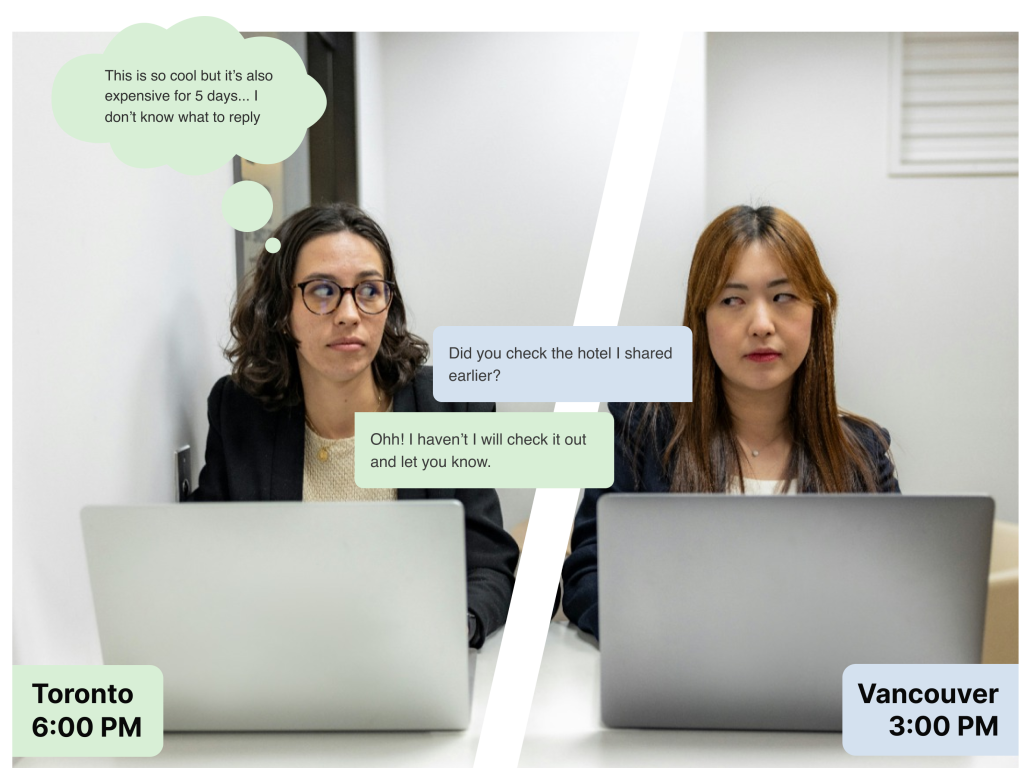
If you’ve ever tried coordinating a trip with friends across different time zones, you know it’s may not be just a matter of a few quick phone calls. It could be going through waves of conflicting preferences, procrastinating the decision-making, days of silence and finally booking some compromised accommodation in a hurry.
How can one be expected to find the perfect stay or plan the ideal itinerary, considering everyone’s preferences all while juggling work, multiple part-time commitments, and daily responsibilities?
What was the Process and Methods at Play?
Understand
- Informal Interviews
- Literature Review
- Participatory Research
- Auto-ethnographic Observations
- Comparative Analysis
Conceptualise
- Experimenting with ChatGPT
- Sketching
- Storyboarding
- Wireframes
- Prototype
Validate
- Usability Testing
- Think Aloud Testing
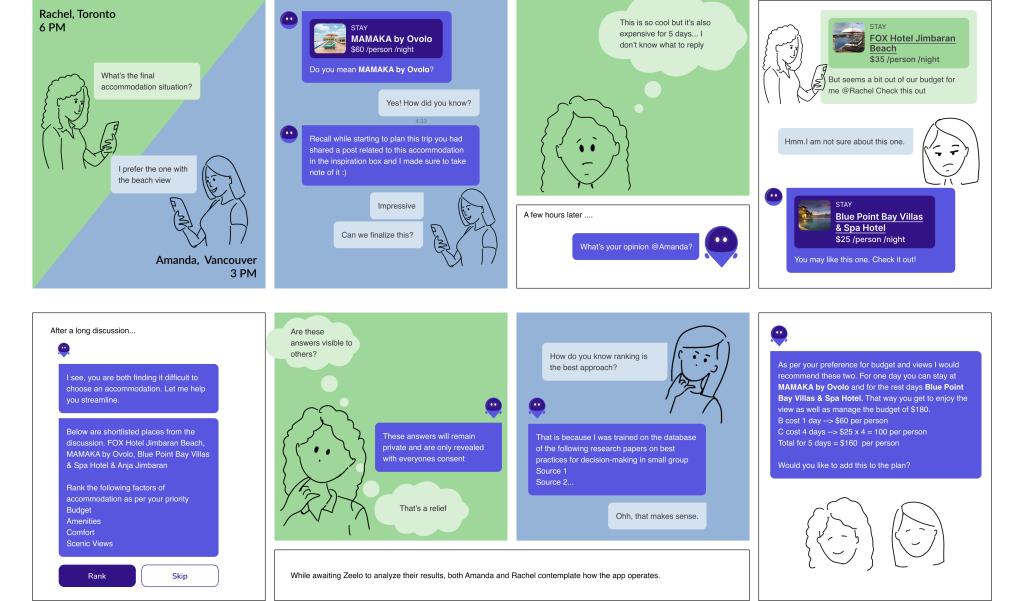
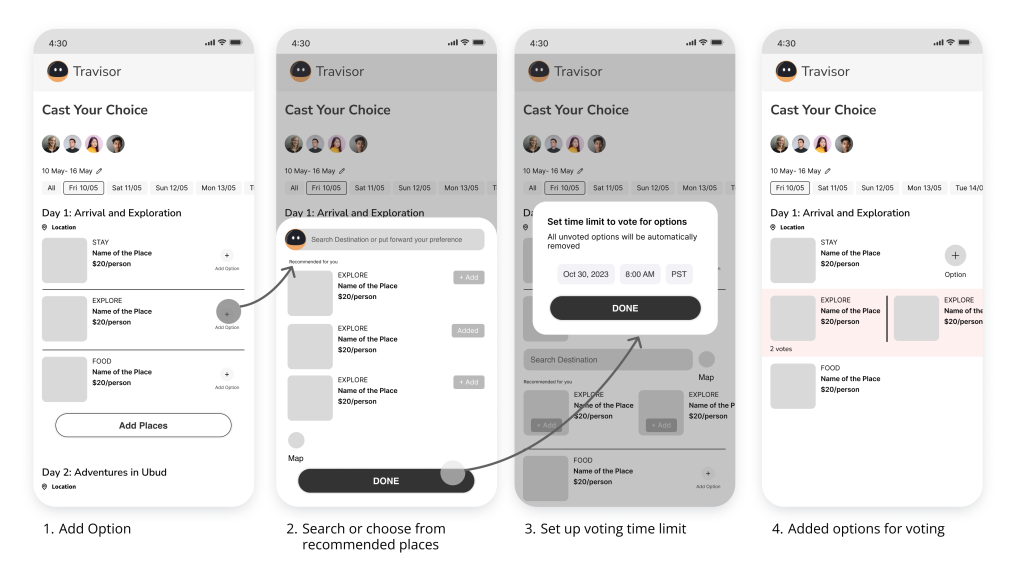

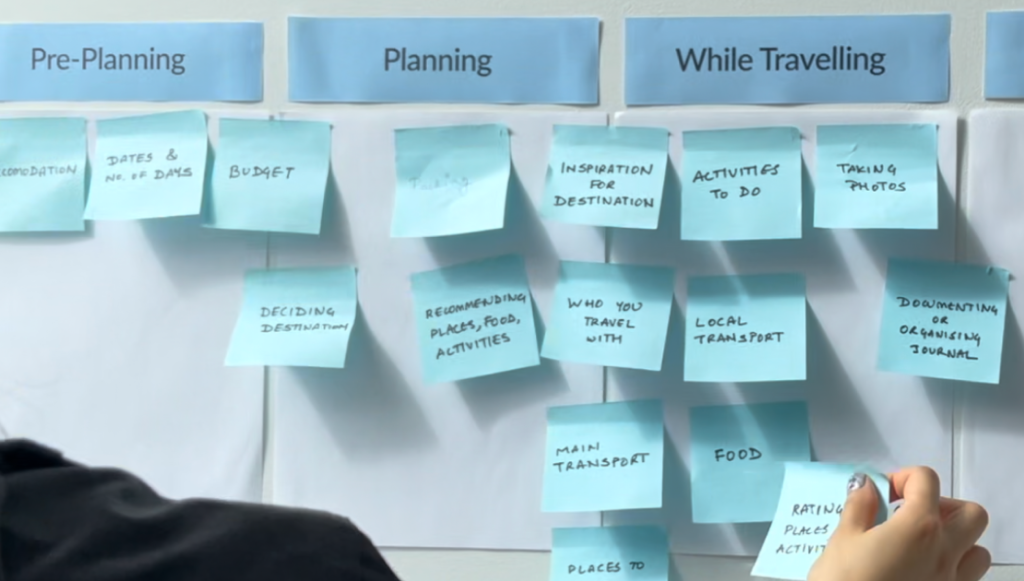
Insights

Users need hyper personalised recommendations

Asynchronous collaboration

Respect for individual and diverse preferences

Balanced & effective decision-making process

Dynamic mental models
I recognised potential areas for improvement and reframed them into actionable
“How Might We” questions.
• How might we make recommendations relevant?
• How might we enhance the collaborative trip planning experience ?
• How might we ease the decision-making process?
Conceptual Solution
How might we make recommendations relevant?
Let’s assume Rachel downloads the app Zway upon receiving an invite from a friend. As she is building her profile on the platform she is asked to import her travel inspirations from social media channels. She decides to go with instagram and adds only posts that are relevant to her current trip. She can go back to this inspiration folder to modify later as well. The algorithm analyses the preferences of the group and creates a relevant itinerary which can serve as a starting point.
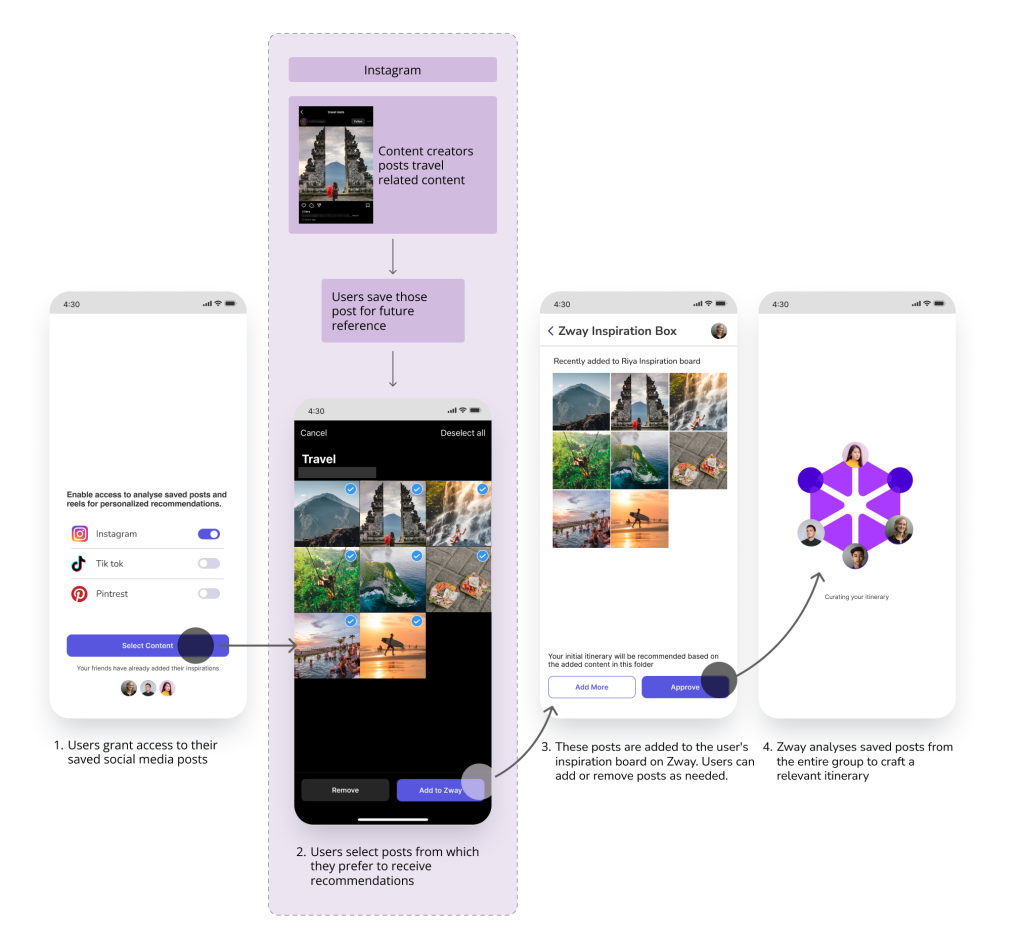
How might we enhance the collaborative trip planning experience ?
After everyone submits their preferences, the app crafts a group itinerary while allowing space for individual pursuits. However, Rachel isn’t satisfied with the proposed accommodation. So she decides to add alternative options. In the search section she is impressed by one of Zeelo’s recommendations, and immediately adds it into the itinerary. These recommendations are made based on users initially shared Instagram inspirations. Desiring a beach view, Rachel searches for more suitable options, and Zeelo presents her with the perfect spot within her budget. Without hesitation, she adds that as well to the itinerary. Now, To streamline decision-making, she sets a three-day voting period for everyone to choose between these options.

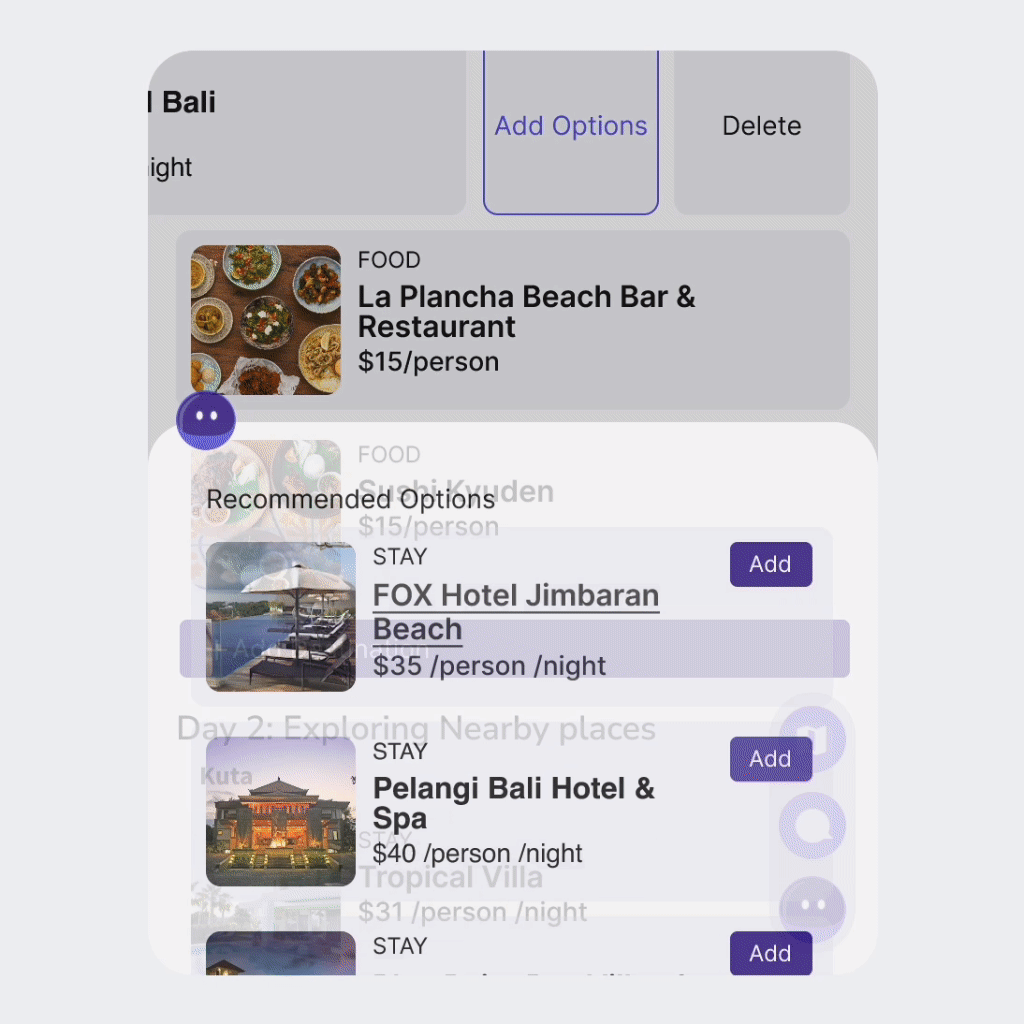

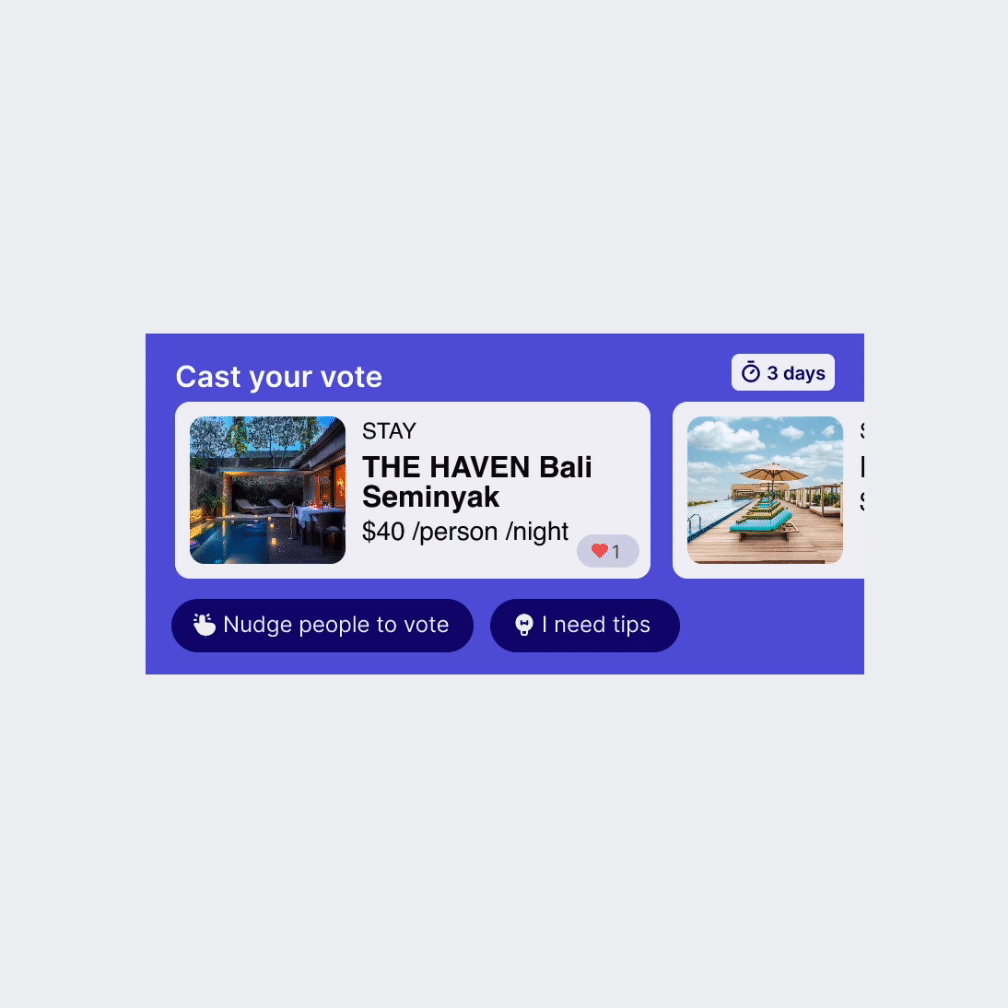
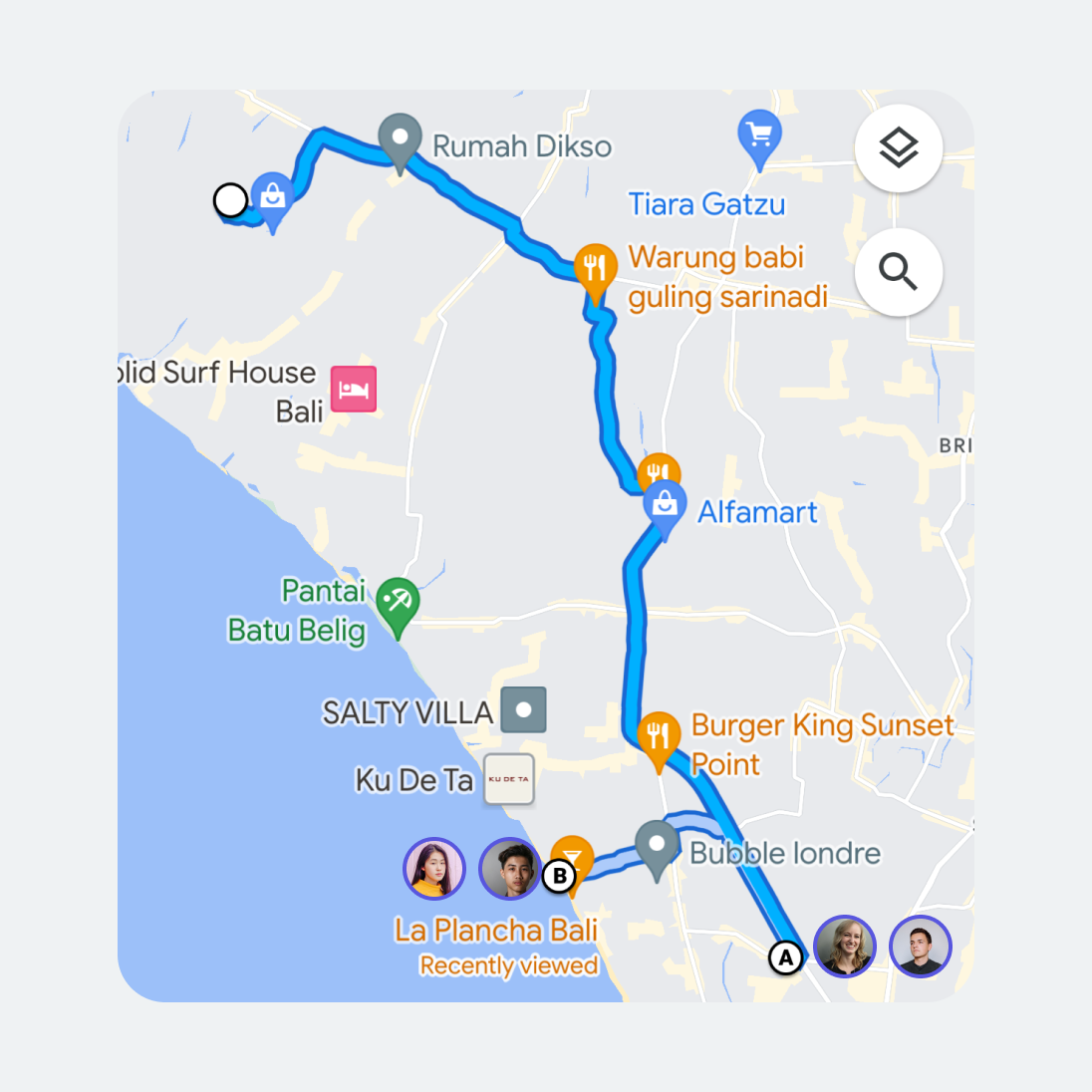
How might we ease the decision-making process?
Despite numerous nudges and multiple options for voting, only 2 participants responded, and the group remained undecided about the accommodation. Four more days passed in silence until Timothy, another member of the group, inquires about the final accommodation on the chat. Here, Zeelo an AI powered chatbot facilitates their discussion.

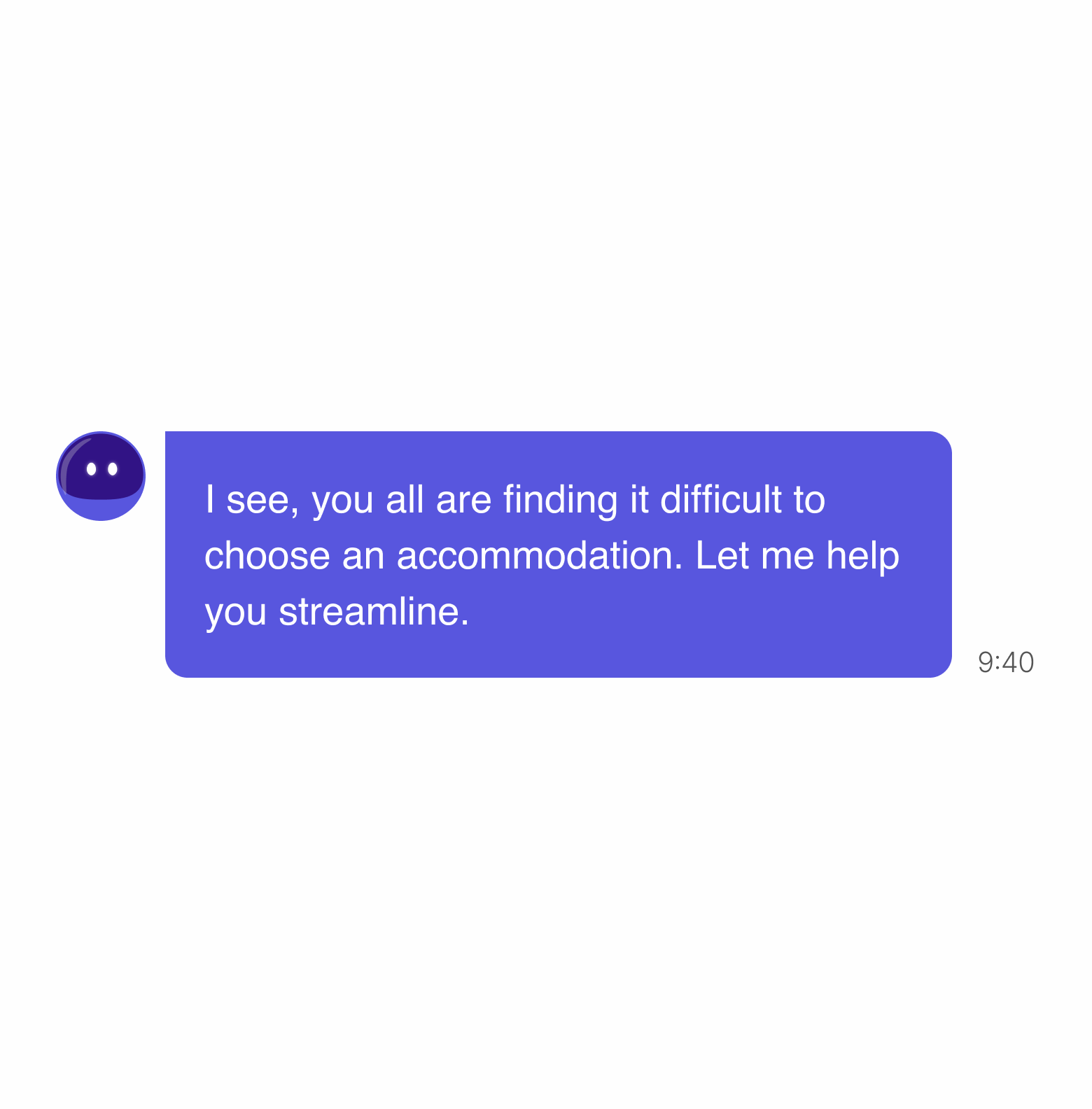

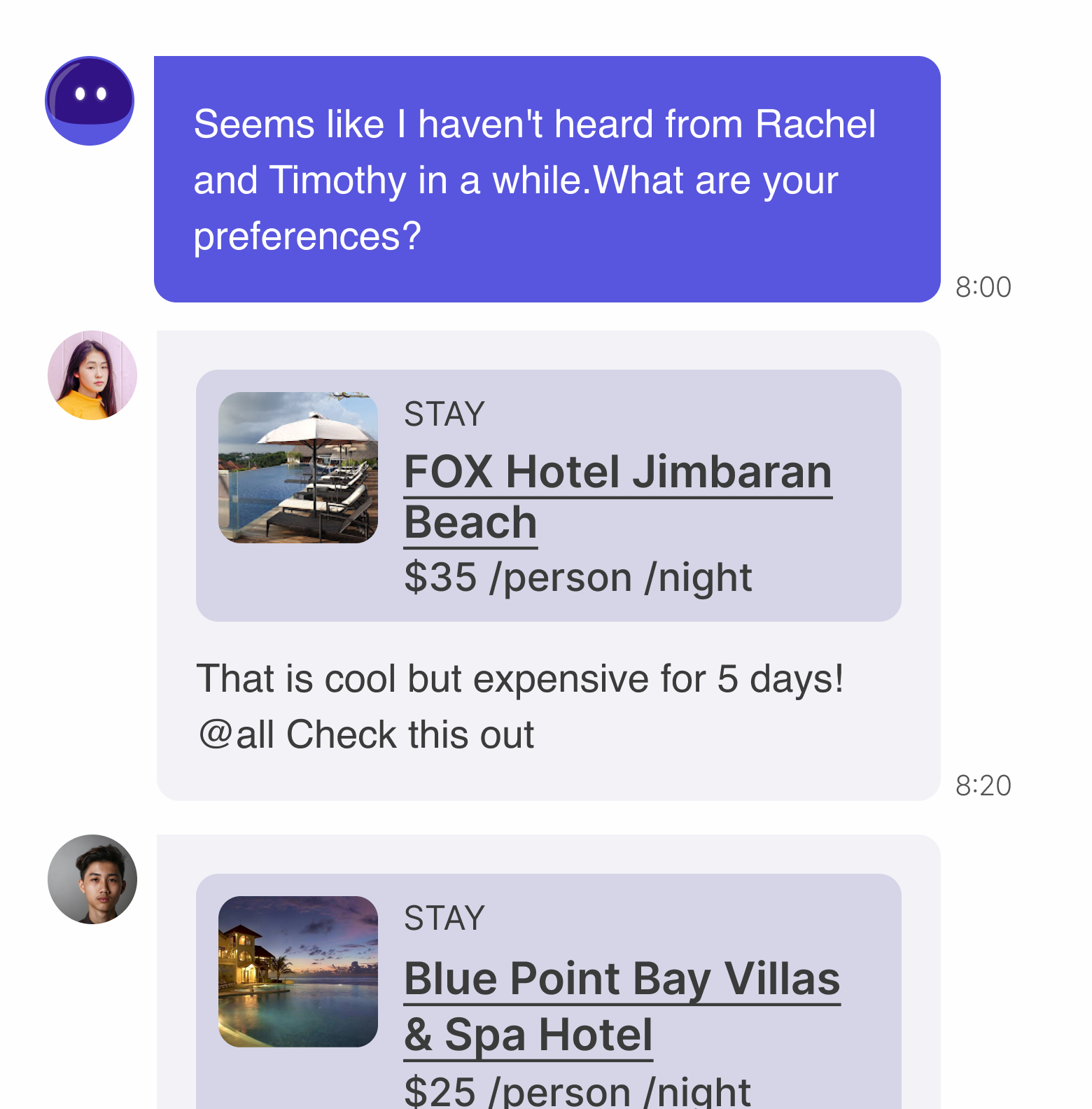
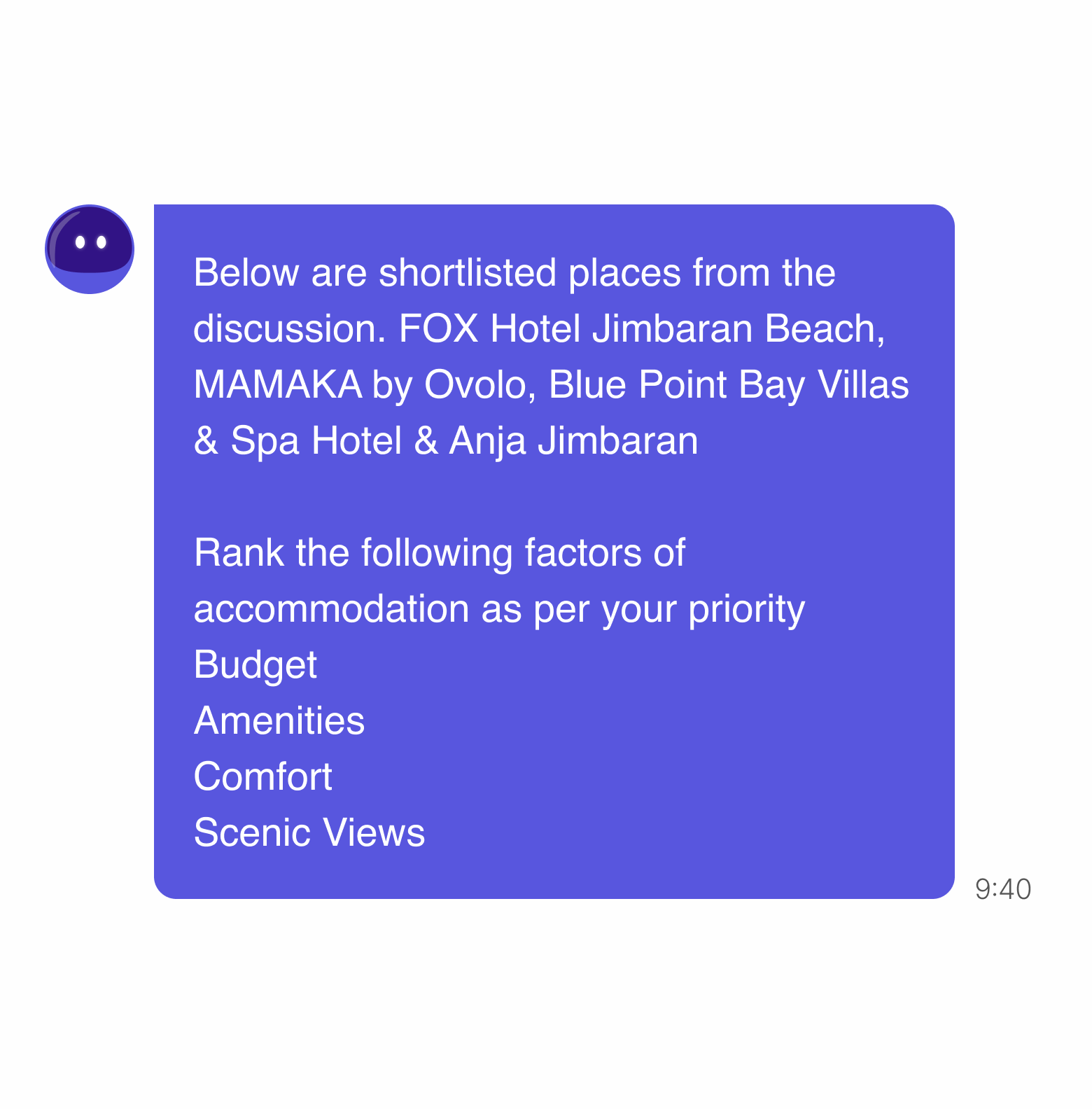

Looking Back
This project gave me a chance to think strategically about how to best place AI into a service and create a convincing prototype that helped to test the hypothesis. If I were to do it again, I would simulate a scenario with participants interacting in a group chat with AI bot to plan a trip. This would help to understand user behaviour and preferences in group decision-making processes, informing further enhancements.
